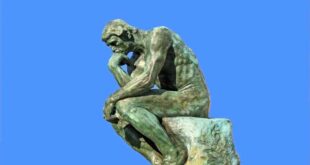
The pilgrims would not have made history the way they did if it had not been for their spirituality, thanksgiving, and gratitude.
Think about it: they packed up and left home in the known world, searching for a new land for religious freedom. They would have only done so with their unwavering spiritual beliefs.
It was a very dangerous journey crossing the Atlantic Ocean. They could have perished in a storm or otherwise become lost at sea. Not to mention, they were sailing to an unknown land of uncertainty. No cruise ships with restaurants, swimming pools, or private cabins with toilets and showers existed.
They sailed on cargo ships about 80 feet long and 24 feet wide. They had already been living on board for about a month and a half before the journey, and then it was a little over two months voyage to the new world. Toilets consisted of buckets tossed overboard when the seas and storms permitted.
Sleeping was on the floor or in makeshift bunks. There were no showers on board. And when they finally arrived, there was no welcome committee and no town, just the new land.
Amazingly, they were still grateful. The same spiritual beliefs that gave them the courage to make the voyage also gave them gratitude for the opportunity to practice religious freedom. Although about half of the pilgrims died from disease during the voyage and first winter, they felt blessed and grateful.
Early civilizations were mostly agricultural. Life and spirituality were closely aligned with nature. The sun, moon, and seasons were of particular importance. Most celebrated in the form of the harvest festival—a fall celebration of thanksgiving and gratitude after the harvest season.
Pilgrims were English colonists who settled in America. Religious freedom was the main driving force in their migration. They brought their religion and culture with them, including a harvest festival.
They first settled in Plymouth, Massachusetts. The Native Americans living in the area were the ancestors of the Wampanoag Nation. These local Indians also celebrated a harvest festival.
The Pilgrims regularly gave thanks as part of their religion. They also had days of thanksgiving consisting of prayer and fasting.
In the autumn of 1621, the Pilgrims completed their first harvest in the New World. They planned a harvest festival for Thanksgiving and fired guns and canons in celebration.
This got the attention of the local Indians, who went to see what the noise was all about. Rather than fasting, the celebration became a three-day feast between approximately 53 Pilgrims and 90 Wampanoag Indians. The feast included waterfowl, venison, ham, lobster, clams, berries, fruit, pumpkin, and squash.
That is how Thanksgiving came about. Giving thanks to God during the harvest festival became a national celebration with family, friends, and great food.
At the heart of Thanksgiving is gratitude—recognition of a greater power working towards the greater good in all things.
When we lack gratitude, more negative things happen. We can become lost in despair. We may wonder why. When we focus on lack, lack is what we manifest. Remember, what we think about expands into reality.
For some people, no matter how much they have, it is never enough, while others always seem to have enough.
The difference is gratitude.
Melody Beattie sums it up this way – “Gratitude unlocks the fullness of life. It turns what we have into enough and more. It turns denial into acceptance, chaos into order, confusion into clarity. It can turn a meal into a feast, a house into a home, a stranger into a friend. Gratitude makes sense of our past, brings peace for today, and creates a vision for tomorrow.” Wow! What a beautiful quote!
Gratitude turns lack into abundance. It is the secret to the law of attraction and higher levels of consciousness.
When we give thanks, we are in alignment with the universe. We then reap spiritual gifts. Being ungrateful manifests obstruction to these gifts by creating spiritual blocks.
Prayer is an expression of gratitude. It’s not like getting up on Santa’s lap and begging for everything we want. I want a new car and boss, but most of all, I want a new boyfriend. But this time, you know, the perfect one. Good looking, rich, and super friendly. That’s wishful thinking.
No, authentic prayer is meditation, communication with God, asking for guidance to do it God’s way, and knowing that miracles of grace will follow if you do.
When we show gratitude for the small things, we manifest big things. Gratitude creates a high-vibration environment—and it’s contagious!
John F Kennedy said, “As we express our gratitude, we must never forget that the highest appreciation is not to utter words, but to live by them.” Indeed!
What we do goes best when we adopt an attitude of gratitude in all we do.
There are healing benefits of gratitude.
It relieves stress, which both prevents and helps heal disease
It improves our mental state, and our mood goes from despair to joy
We see opportunities and become creative
Friedrich Nietzsche said, “The essence of all beautiful art, all great art, is gratitude.”
So, we can take things for granted, or we can adopt an attitude of gratitude.
The essence of Thanksgiving is gratitude—being thankful. Gratitude is a powerful spiritual practice. When we live a life of gratitude, we live a life of happiness and abundance. We experience a peaceful life full of miracles and recognize grace in all things. We see beauty, hear beauty, smell/taste beauty, and feel beauty. Gratitude lights the path back home.
Happy Thanksgiving!



